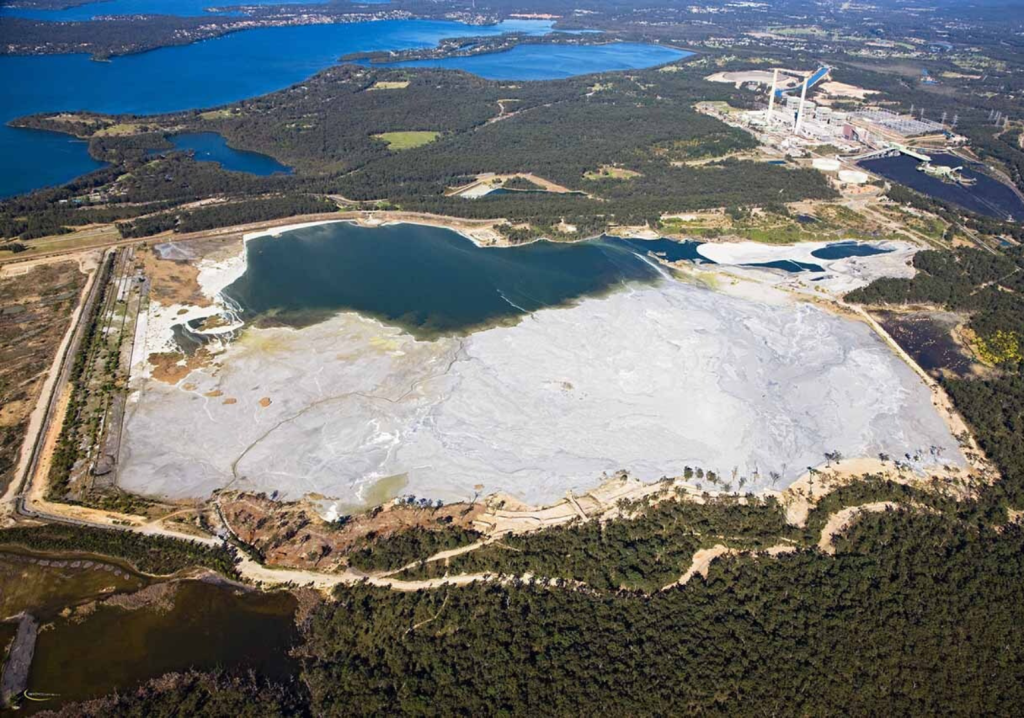After substituting a record-breaking amount of cement with coal ash in low-carbon concrete, this research team endeavoured to understand its performance over time.
Coal ash accounts for almost one fifth of Australia’s waste stream.
Although considered a by-product – and used in soil stabilisation and fertiliser – around half of the 12–15 million t of coal ash generated from the nation’s coal-fired power stations each year ends up in ash ponds.
However, coal ash is also an excellent cementitious material, capable of improving concrete performance, including both structural performance and long-term durability.
The industry standard proportion of coal ash in low-carbon concrete currently sits at 40 per cent. But through trial and error and a lot of modelling, a team of RMIT researchers – together with industry partners including AGL’s Loy Yang Power Station and the Ash Development Association of Australia (ADAA) – were able to reach 80 per cent cement substitution.
To understand how the team managed to assess the long-term performance of this ground-breaking “green concrete” formula, create sat down with lead researcher Dr Chamila Gunasekara.
Finding the perfect recipe
To identify how to increase the cement replacement of coal ash in low-carbon concrete, the team first had to understand the potential detrimental effects and barriers of this approach. This entailed analysing coal ash taken from the top of furnaces from more than 10 different power stations.
Next steps included modifying the cement’s chemistry by introducing nano-engineered technology via tiny amounts of nano additives.
“After modifying the cement mix with more ash, I started bringing in secondary materials and optimised the right mix proportions to achieve the relevant engineering performance,” Gunasekara said.

Developing and optimising the cement formula is similar to making a good curry, he explained.
“We know all the ingredients, but we need to add them in the right amounts and proportions,” Gunasekara said.
Once the team created two mixes – with 65 and 80 per cent replaced concrete respectively – stage two entailed testing its short- and long-term properties.
“We tested the concrete specimens for structural capacity and long-term durability over a two-and-a-half year timeframe, including exposure to sulphate (acid) and abrasive chloride environments such as seawater,” Gunasekara said. “Then we exposed it to dry environments, such as carbonation.”
The testing revealed that the low-carbon concrete mixes match all the Australian standards, requirements and specifications of structural-grade concrete, with compressive strengths between 32 and 40 MPa.
“It’s designed to be used for structural applications such as bridges, high-rise buildings and concrete walls,” Gunasekara added.
From pond to product
With megatonnes of lower grade coal ash sitting in ash ponds, the team’s next focus was figuring out a way to harvest and repurpose this hugely underutilised resource.
“After some initial estimations with the ADAA, we figured out there is ash for at least the next five to seven decades in the ponds,” Gunasekara said. “We worked with Loy Yang Power Station to test the material developed with some of the basic concrete elements and properties.
“Following testing, we are confident that we can transfer this technology easily by utilising pond ash, which is comparable to coal fly ash in terms of performance.”
To formulate the green cement with pond ash on a large scale, the team consulted power stations about how to best extract the material.
“Simple technology is required to extract it, followed by minimal pre-processing,” Gunasekara explained.
Once extracted, the pond ash comes as a wet material – which is then slightly dried to transform it into a dry format.
“Ash ponds risk becoming an environmental hazard, so the ability to repurpose this ash in construction materials at scale would be a massive win,” he said.
Modelling the future
While initial five-year testing found the green concrete performs better than conventional concrete, this doesn’t mean it will perform as strongly 20 years down the line.
To that end, the team, including Dr Yuguo Yu at RMIT, partnered with Hokkaido University to develop a physics-based advanced numerical model to validate their accelerated durability testing. This enables them to predict how the concrete will perform over time and optimise the mixes based on these numerical insights.
“We’re able to see, for example, how the quick-setting nano additives in the mix act as a performance booster during the early stages of setting, compensating for the large amounts of slower-setting fly ash and pond ash in our mixes,” Gunasekara said.
“The inclusion of ultra-fine nano additives significantly enhances the material by increasing density and compactness.”
The modelling program also allows the team to predict how the low-carbon concrete will degrade.
“For example, if we constructed a concrete bridge in a coastal region using this green concrete, we can assess the corrosion probability after 10 years and 20 years,” Yu said. “Based on that, we can develop the right maintenance techniques.”
Through life cycle assessment, the team can also develop a detailed understanding of the sustainability aspects compared with conventional concrete, such as carbon emissions or any other detrimental environmental impacts.
Whole-life costing can also be compared.
“The initial cost of the green concrete is comparable to conventional concrete,” Gunasekara said. “But when considering the whole life cycle, because the green concrete is more durable than conventional concrete, the cost will be lower.”
When using the green concrete, carbon emissions will similarly reduce across the life cycle of assets.
“Using the 80 per cent cement substitution formulation, we calculated up to 10-20 per cent carbon reduction, which is huge,” Gunasekara said.
The team is currently working with AGL to develop low-grade structural concrete, and concrete bricks and blocks, and are also engaging in discussions with ready-mix concrete partners.
“We have an Australian Research Council Industrial Transformation Research Hub called TREMS [with] almost $13 million in funding,” Gunasekara said. “We also have many local councils which are partners of this research hub to take the concrete to the next level.”
